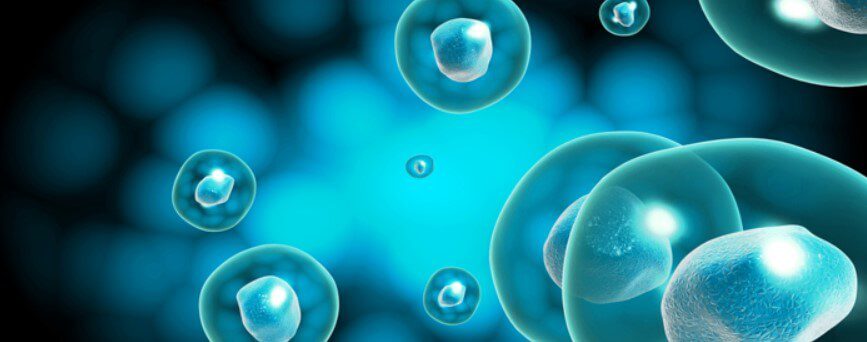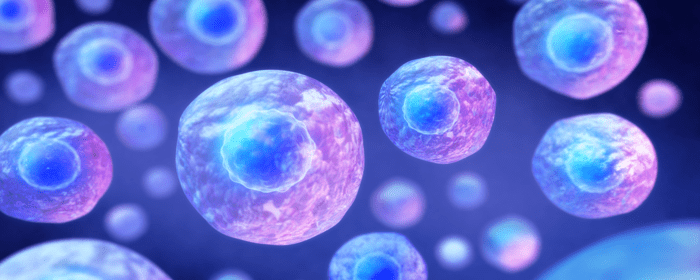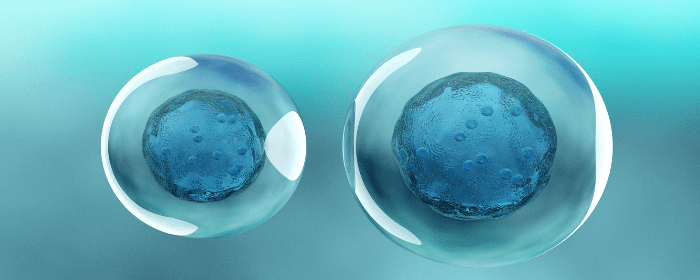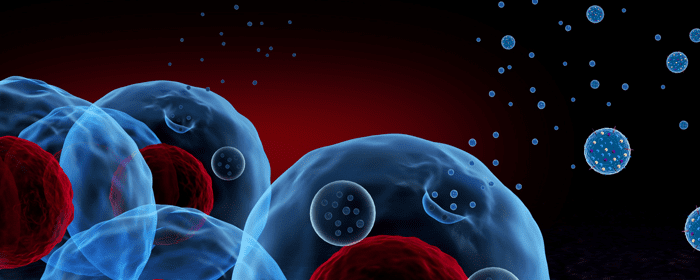
by Stemedix | Jan 22, 2024 | Health Awareness, Multiple Sclerosis, Parkinson's Disease, PRP, Stem Cell Research, Stem Cell Therapy, Studies
Regenerative medicine options like stem cell treatments are growing in popularity both because of their potential effectiveness and because they can help you avoid invasive procedures like surgeries. Stem cell therapies focus on helping your body improve what it already does naturally — heal injuries.
Stem cells are the cells from which all differentiated cells form. They can come from your bone marrow or fat, with some people also turning to umbilical cord stem cells for treatment. But how do you know if you could benefit from stem cell therapy?
Those With Sports Injuries
If you play sports, you know that injuries can occur at any moment. You can twist your body in an unnatural way or suffer an impact that damages joints or ligaments. Minor injuries usually benefit from ice packs and rest, but healing can take time.
Healing is also a delicate process that can be disrupted. If that occurs, the injury might not heal completely and could lead to chronic issues that impact your mobility and even cause lasting pain.
When you turn to stem cell therapies, you can speed up the healing process. This type of regenerative medicine helps reduce inflammation, making it easier for nutrients and oxygen to get to the site of the injury.
Increased oxygen and nutrients are particularly important when dealing with ligaments and cartilage, which naturally don’t receive much blood flow.
Those With Arthritis
Arthritis is a debilitating condition in which your joints’ cartilage starts to deteriorate. The cartilage is what cushions your joints, preventing the bones from rubbing against one another. Once the cartilage breaks down, you can experience pain, stiffness, and mobility issues. In some cases, it can even cause joint deformity.
Stem cells, especially mesenchymal stem cells, release anti-inflammatory factors that help with pain and encourage your body to heal the damaged areas. Stem cells injected into the affected joint can reduce swelling, helping reduce pain and also restoring some mobility to stiff joints.
One of the best things about stem cell therapies for arthritis is that this kind of treatment is minimally invasive.
Those With Spinal Cord Injuries
Spinal cord injuries may severely impact your quality of life. You may struggle to perform everyday tasks and could face mobility issues that leave you dependent on others.
Spinal cord injuries are particularly difficult to treat because healing tends to plateau as a result of microenvironmental changes like inflammation, glial scar formation, and more. Stem cells can help because of their power to reduce inflammation, allowing the healing process to continue.
Ongoing treatment with stem cells could offer an improvement in mobility and a reduction in pain levels.
Those With Traumatic Injuries
After a major injury, like one that results from a car accident, healing can seem impossible. You may experience significant pain and could be dealing with mobility concerns that require physical therapy and even surgery.
Stem cell therapy works well in conjunction with physical therapy and other treatments because it utilizes cells from your body gathered in a minimally invasive way. You can continue other therapeutic programs while giving your body the chance to reduce inflammation so that blood can reach the injury site.
A better level of blood flow to the area not only brings nutrients and oxygen but also helps flush out toxins at the injury site that could make the symptoms worse.
Those Who’ve Gone Through Surgery
Going through surgery can put a lot of strain on your body. That is one of the reasons why the recovery process is often so long. If you’ve been through a surgical procedure, consider stem cell therapy.
Stem cell therapy can help reduce the recovery time so that you can start feeling more like yourself again. Inflammation is a huge concern. Think of the kinds of bruising you may have after a surgical procedure. Although stem cell therapy can’t prevent all inflammation and bruising, its use after surgery can reduce how much you experience.
If there’s less inflammation, the area can receive more nutrients and experience faster healing.
Those Who Need Joint Replacements
Replacing a joint is a surgical procedure that requires the implantation of an artificial joint and the removal of the damaged one. The recovery process for this type of procedure tends to be difficult, with many people experiencing mobility issues even as they heal because the artificial part hasn’t really integrated into the rest of the tissue.
If this type of surgery is something that you have to go through, adding stem cell therapy to the recovery process makes a difference. Stem cell therapies encourage the growth of new tissues around the artificial replacement that can make mobility easier and decrease pain, helping you get back to your life more rapidly.
Those With Degenerative Diseases
Degenerative diseases are chronic conditions that progressively get worse. They include diseases like:
For these conditions, a combination of treatments is usually most effective. They can include medications, physical therapy, and even surgery. By also turning to stem cell therapy, you have the chance to tackle the underlying cause of the problem so that you can get relief from symptoms.
Stem cell therapy for Parkinson’s disease, for example, focuses on helping restore the failing neurons that are in charge of producing dopamine. This could help with the management of dopamine levels and could even restore some function. In many instances, stem cell therapy for Parkinson’s can even slow down the disease.
Is Stem Cell Therapy Right for You?
Stem cell therapy might be able to offer the help you need with managing degenerative conditions, healing injuries, and providing pain relief that doesn’t rely on narcotics. You don’t have to worry about suffering allergic reactions or rejections because stem cell therapies usually rely on cells from your body.
If you’re considering stem cell treatments or want to know more about what the process involves and what you can expect, talk with a regenerative medicine specialist about the options available.

by admin | Jan 18, 2024 | Multiple Sclerosis, Mesenchymal Stem Cells, Stem Cell Research, Stem Cell Therapy
Multiple sclerosis (MS) is a progressive autoimmune disease that affects the brain, spinal cord, and central nervous system (CNS). Affecting an estimated 3 million people worldwide, MS is typically characterized by an autoimmune response that results in inflammation, demyelination, and degeneration of axons.
Most patients who are diagnosed with MS demonstrate a disease progression characterized by periods of relapse and remission that can last for an extended duration.
There is no treatment that can yet address the various rates of MS progression. Additionally, current therapeutic approaches are designed to address the shortening of the duration of recovery following an attack, mitigating the progression of the disease, and attenuating the symptoms associated with MS.
Recently, mesenchymal stem cells (MSCs) have shown various ranges of effectiveness when used for treatment of autoimmune diseases in clinical trials. However, most of the trials utilizing MSCs for this purpose have been reported for a variety of reasons, including a low number of treated subjects, different doses used in the studies, the feasibility of autologous or allogeneic transplantation, and the unclear therapeutic window after the treatment effect.
Considering this, the purpose of Islam et al.’s systematic review and meta-analysis (SRMA) was to provide a comprehensive assessment of the effectiveness and safety of MSC therapy in individuals diagnosed with MS. To achieve this, the authors identified studies that reported on the efficacy and safety of MSC therapy in human patients with MS based on the changes in the Expanded Disability Status Scale (EDSS) score from baseline to follow-up period. This screening process resulted in a total of 30 studies being incorporated into the systematic review and 22 studies being included in the subsequent meta-analysis.
Islam et al. reported that, following MSC therapy, it was observed that 40.4% of the patients with MS experienced improvement; 32.8% of patients remained stable while 18.1% experienced a worsening of their condition. In terms of the safety of MSC therapy, the authors reported that while no major complications were observed, headaches (57.6%), fever (53.1%), urinary tract infections (23.9%), and respiratory tract infections (7.9%) were the most commonly reported adverse events.
While further research, the development of new technology, optimization of MSC doses, and larger clinical trials are needed to fully evaluate the use of MSC therapy in the treatment of MS, the authors conclude that the results of this SRMA indicate that MSC therapy seems to be an efficacious therapeutic strategy for treating patients with MS.
Source: Islam MA, Alam SS, Kundu S, Ahmed S, Sultana S, Patar A, Hossan T. Mesenchymal Stem Cell Therapy in Multiple Sclerosis: A Systematic Review and Meta-Analysis. Journal of Clinical Medicine. 2023; 12(19):6311. https://doi.org/10.3390/jcm12196311

by admin | Jan 17, 2024 | Exosomes, Glaucoma, Regenerative Medicine, Stem Cell Research, Stem Cell Therapy
According to the World Health Organization, at least 2.2 billion people worldwide have near or distant vision impairment. In at least 1 billion of these cases, vision impairment could have been prevented or has yet to be addressed. Glaucoma, corneal disease, and retinal disorders are among the leading contributors to these vision impairments.
Since the pathogenesis of these eye diseases is not fully understood, fully effective treatments have yet to be developed. Considering this, Li et al. reviewed recent research to examine the effectiveness of exosomes in various diseases in vivo, which provides the potential for a new option for the treatment of eye diseases.
Exosomes are extracellular small vesicles that are formed by the regulation of endocytosis, fusion, and efflux and contain a variety of biologically active substances, including proteins, miRNAs, IncRNAs, and lipids.
Exosomes are found in all biological fluids and have roles that vary depending on their origin. These roles include cell-to-cell communication, waste transfer, and regulation of the immune system in vivo. Additionally, when serving as a carrier, exosomes are involved in many pathological processes such as nerve repair, vascular regeneration, immune response, and fibrosis formation.
Examining the various roles exosomes play within the body, the authors of this review consider their role in the treatment of serious ocular diseases, including glaucoma, diabetic retinopathy, and keratitis. Li et al. point to studies demonstrating exosomes’ ability to promote the repair of injured nerves, inhibit fibrosis, modulate immune function, and promote angiogenesis as evidence of the important role they have in treating ocular disease.
Specifically, exosomes contain a large number of immunosuppressive molecules that inhibit lymphocyte proliferation and effectively increase ocular immune tolerance to prevent ocular autoimmune disease.
Exosomes can also transfer protein and RNA to receptor cells and can accelerate wound healing of corneal epithelial cells, providing a new approach for treating large corneal lesions.
Studies have also demonstrated a link between exosomes and age-related macular degeneration (AMD) with specific exosomes considered to have neuroprotective effects that are closely related to the pathological progression of AMD.
The authors conclude that exosomes are able to be used as therapeutic carriers to participate in processes such as immune response, angiogenesis, and nerve repair in ocular-related diseases. While research into this is still emerging, the presence and accessibility of exosomes will become a potential way to diagnose and treat ocular diseases.
Source: “Progress in exosomes and their potential use in ocular diseases.” 18 Sep. 2020, https://www.ncbi.nlm.nih.gov/pmc/articles/PMC7459212/.

by Stemedix | Jan 15, 2024 | Health Awareness, Back Pain, Pain Management, Regenerative Medicine, Stem Cell Research, Stem Cell Therapy
For the treatment of a variety of health conditions, one option more people are relying on is regenerative medicine. This field focuses on helping your body’s natural healing process function at its best, making it possible for tissues to regenerate so that you can obtain pain relief and improve mobility. There are various types of regenerative medicine. Learn more about them to know the choices you have.
Regenerative Medicine: What It Is and What It’s Used For
Regenerative medicine is a group of treatments focused on healing tissues throughout the body while also restoring the function you may have lost because of aging, medical conditions, and more.
When you’re young, your body is able to heal more efficiently, but the older you get, the longer the healing process can take. In some instances, this longer length of time even leads to the development of chronic pain issues that can be tough to deal with.
With regenerative medicine, you get the chance to try minimally invasive treatments that can offer results. Most of the best regenerative medicine options focus on stem cells, but some also rely on your blood’s components to provide lasting results.
Regenerative medicine can offer help for many types of issues, including:
The kind of condition you have may dictate the type of regenerative treatment that has the potential to be most effective.
The Different Kinds of Regenerative Medicine Therapies
There are many regenerative medicine therapies to choose from, but some of the most trusted include stem cell therapy, platelet-rich plasma, and prolotherapy.
What Is Stem Cell Therapy?
Stem cell therapy is a treatment option that utilizes stem cells to promote healing. Stem cells are undifferentiated cells that can create specialized ones. They have the ability to self-renew and create functional tissues, working as the body’s repair system.
During stem cell therapy, your healthcare provider injects stem cells into the treatment area. There are different types of stem cells, including adult stem cells and embryonic stem cells.
Adult stem cells are undifferentiated cells found in various tissues throughout the body, including fat and bone marrow. They have a more limited ability to differentiate than embryonic stem cells, but they are much more readily available because they come from your body.
Mesenchymal stem cells are found in fat and bone marrow, among other tissues, and they can help the body respond to inflammation and promote healing.
What Is Platelet-Rich Plasma?
Your blood is made up of a few components, including:
- White blood cells
- Red blood cells
- Plasma
- Platelets
Plasma is the liquid portion of blood. Platelets are not actually cells but cell fragments that help with the clotting process and contain growth factors that can stimulate cellular reproduction as well as healing at the treatment site. Platelet-rich plasma refers to plasma that has more platelets than usual.
To create a PRP injection, your doctor takes a sample of your blood and runs it through a centrifuge. The centrifuge spins the sample very rapidly, dividing the blood components so that your doctor can extract the platelets and add them to the plasma. This is then injected at the treatment area.
PRP therapy can be a good option for the treatment of ligament injuries, osteoarthritis, post-surgical healing, and even hair loss.
These injections work to reduce inflammation at the treatment site, which allows better circulation. More blood flow means the area receives more nutrients and oxygen, helping with the healing process. Less inflammation also means less pain.
What Is Prolotherapy?
Prolotherapy is another type of regenerative medicine that can be used to relieve pain. It involves injecting a small amount of an irritant, like sugar, into the treatment area. This irritant trigger an immune response and jumpstarts your body’s natural ability.
It shows promise in the treatment of musculoskeletal conditions, including issues with your bones, ligaments, soft tissues, and more.
Your body responds to the sugar or other irritant as a threat, triggering your immune and healing responses to rush to the area to remove the irritant and also begin the healing process.
Benefits of Regenerative Medicine
Regenerative medicine offers the chance to get relief from pain and inflammation without having to go through invasive procedures. Most regenerative medicine options require only a minimally invasive procedure, like providing a sample of blood or undergoing a mini liposuction procedure to obtain fat.
Because regenerative medicine procedures don’t require an elaborate process, you don’t have to worry about a long preparation or recovery period. You can usually get back to your normal life right after receiving treatment.
Regenerative medicine works to help manage the underlying cause of the pain you’re experiencing. It doesn’t just mask symptoms as pain medication and anti-inflammatories do. By offering the potential of healing injuries, it may be able to provide lasting relief.
Regenerative medicine is also more affordable than an invasive procedure like surgery. The surgery itself is costly, and the recovery can mean relying on physical therapies that add to the budget. That is not an issue you have to worry about with regenerative medicine options like stem cell therapy, PRP therapy, or prolotherapy.
Managing Pain and Inflammation with Regenerative Medicine
Regenerative medicine holds significant promise for the treatment of conditions that cause pain and inflammation. By relying on your natural healing process, regenerative medicine only improves what your body does.
If you’re considering regenerative medicine to help with any conditions you face, ask your healthcare provider about it to see if it’s a good choice for you.

by admin | Jan 11, 2024 | Exosomes, Stem Cell Research, Stem Cell Therapy
Repairing the structure and functionality associated with subcutaneous cartilage defects continues to be a challenge in the fields of plastic and reconstructive surgery. While current methods, including autologous chondrocyte implantation and matrix-assisted chondrocyte implantation, have been successful in some regard, they continue to present a number of limitations, including donor limitation, donor morbidity, and degradation of the graft tissue.
Recently, cartilage progenitor cell (CPC)-based tissue engineering has drawn attention in the field of cartilage regeneration, primarily for its strong chondrogenic differentiation capacity.
Unfortunately, a general lack of a suitable chondrogenic niche has continued to hinder the clinical application of CPC-regenerated cartilage in the subcutaneous environment.
Considering this, and for the purposes of this study, Chen et al. explored the use of exosomes derived from chondrocytes (CC-Exos) as a way to provide the CPC constructs with a cartilage signal in subcutaneous environment for efficient ectopic cartilage regeneration.
After 12 weeks of post-surgical injection of CC-Exos, the authors’ animal model demonstrated that the CC-Exos injections effectively increased collagen deposition and minimized vascular ingrowth in engineered constructs, which efficiently and reproducibly developed into cartilage. This study also demonstrated that the CPC constructs supplied with these CC-Exos could also form cartilage-like tissue with minimal hypertrophy in a subcutaneous environment and with no help from any chondrogenic factors.
Additionally, Chen et al.’s study showed that CC-Exos significantly promoted chondrogenesis-related factors at the mRNA and protein levels in CPCs while also limiting angiogenesis typically associated with hypertrophic differentiation and subsequent calcification.
Despite these promising results, Chen et al. point out that the exact components associated with CC-Exos have yet to be determined. Because of this, the authors call for additional studies to determine the specific components of CC-Exos and their underlying mechanisms related to cartilage repair.
Considering the findings of this study, the authors believe that CC-Exos alone could provide a preferable chondrogenic environment, help maintain the stability of cartilage tissue, and serve as a promising therapeutic approach for the treatment of ectopic cartilage defects.
Source: Chen, Y., Xue, K., Zhang, X. et al. Exosomes derived from mature chondrocytes facilitate subcutaneous stable ectopic chondrogenesis of cartilage progenitor cells. Stem Cell Res Ther 9, 318 (2018). https://doi.org/10.1186/s13287-018-1047-2

by admin | Jan 10, 2024 | Spinal Cord Injury, Stem Cell Research, Stem Cell Therapy
Spinal cord injury (SCI) is a devastating pathological condition affecting motor, sensory, and autonomic function. Additionally, recovery from a traumatic SCI (TSCI) is challenging due to the central nervous system’s limited capacity to regenerate cells, myelin, and neurological connections.
While traditional therapeutic treatments have proven ineffective in assisting in recovery, mesenchymal stem cells (MSCs) hold significant promise for the treatment of TSCIs.
As part of this systematic review, Montoto-Meijide et al. analyze the efficacy, safety, and therapeutic potential of MSC-based cell therapies in TSCI.
Specifically, the authors identified 22 studies fitting the objectives of this review, which provided the information needed to analyze changes in AIS (ASIA Impairment Scale) grade; to study changes in ASIA sensory and motor score; to evaluate chances in neurophysiological and urodynamic parameters; to identify changes in neuroimaging tests; and to test for the existence of adverse effects of MSC therapy.
Typically occurring as a result of trauma related to accidents or falls, TSCIs consist of two phases, a primary and a secondary phase. Considering the progression of SCI from the primary to secondary phase, the development of a therapeutic neuroprotective approach to prevent secondary injury continues to be a priority in both clinical and basic research.
Considering this, MSCs are currently one of the most promising therapeutic options for TCI, primarily due to their capacity for neuronal differentiation and regeneration, as well as their anti-apoptotic, anti-inflammatory, and angiogenic properties.
The 22 studies analyzed as part of this review included 463 patients. When analyzed in terms of the objectives listed above, Montoto-Meijide et al. reported that in controlled studies patients who received MSC therapy improved their AIS by at least one grade, with most studies also demonstrating improvement in sensory cores and motor scores.
In terms of neuroimaging evidence, the authors reported decreased lesion cavity size and decreased lesion hyperintensity. In addition, one-third of trials reported mild or moderate adverse effects related to the route of administration, and no reported serious treatment-related adverse effects.
The authors of this review reported that their results were consistent with the findings of other recent meta-analyses conducted by other researchers and were also consistent with studies that used a large number of patients but were not included in their review.
In addition, the authors also raise several interesting points that required further study, including determining the ideal stem cell type to use, identifying the most effective route and dose of administration, and finding out which degree and stage of development of the TSCL is most receptive to MSC therapy.
While MSC therapy continues to demonstrate promising potential results, Montoto-Meijide et al. also highlight future potential therapies currently in development. These therapies include gene therapies, nanomaterials, and neurostimulation combined with rehabilitation; all three of these potential treatments have shown promise when used in patients with SCI.
Limitations of this review include the relative newness of cell therapy in TSCI made it difficult to find relative studies and most of the studies used did not have a control group, were not randomized, showed low methodological quality, and lacked detail about the process and/or patient follow-up. Considering this, the authors emphasize the need for multi-center, randomized, and controlled trials with larger numbers of patients over a long period of time as a way to draw firm conclusions regarding this therapy.
Montoto-Meijide et al. conclude the positive changes in AIS grade and in ASIA sensory and motor scores, in addition to the short- and medium-term safety of this therapy, demonstrate the potential benefit of MSC therapy in TSCI patients.
Source: Montoto-Meijide R, Meijide-Faílde R, Díaz-Prado SM, Montoto-Marqués A. Mesenchymal Stem Cell Therapy in Traumatic Spinal Cord Injury: A Systematic Review. International Journal of Molecular Sciences. 2023; 24(14):11719. https://doi.org/10.3390/ijms241411719







 St. Petersburg, Florida
St. Petersburg, Florida
